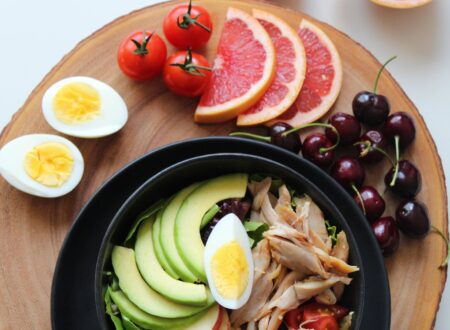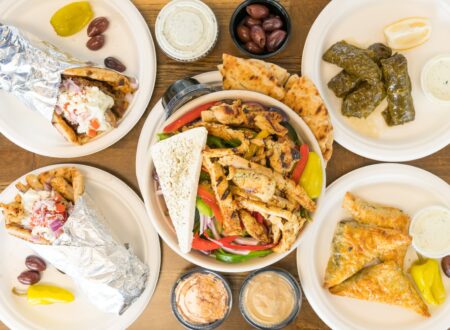Let’s be honest — eating well on a tight budget can feel like a balancing act. Between rising grocery prices and busy schedules, it’s easy to fall into the trap of drive-thrus and microwave meals. But the truth is, eating delicious, nutritious food doesn’t have to cost a fortune.
With a little planning, smart shopping, and creativity in the kitchen, you can whip up satisfying meals that are light on your wallet but big on flavor. Whether you’re a student, a busy parent, or just trying to cut down on food expenses, this guide is packed with tips and recipes to help you eat well and save money.
Why Budget-Friendly Eating Matters
Sticking to a food budget isn’t just about saving money — it’s about making the most of what you have. Budget-friendly meals help reduce food waste, encourage healthier choices, and teach you valuable cooking and planning skills.
Plus, let’s be real: there’s something seriously satisfying about putting together a tasty meal for just a few dollars per serving.
Smart Shopping: Where Savings Start
Before you even turn on the stove, your savings begin at the grocery store. Here are a few ways to make every dollar count:
1. Plan Your Meals
Meal planning helps you avoid impulse purchases and make the most of your ingredients. Base your meals on what’s already in your pantry and what’s on sale that week.
2. Make a Grocery List (and Stick to It)
Shopping with a list reduces the chances of overspending. Stick to the perimeter of the store, where the fresh, whole foods live — think produce, dairy, and protein.
3. Buy in Bulk (When It Makes Sense)
Staples like rice, pasta, lentils, and oats are much cheaper in bulk. Just make sure you’ll use what you buy to avoid waste.
4. Choose Store Brands
Store-brand items often have the same ingredients as name brands but come at a fraction of the price.
5. Use Coupons and Apps
Digital coupons and cashback apps like Ibotta or Rakuten can offer real savings on everyday groceries.
Pantry Staples to Keep on Hand
A well-stocked pantry is the backbone of budget-friendly cooking. Here are a few versatile and inexpensive ingredients to keep around:
- Dry goods: rice, lentils, pasta, oats, flour
- Canned goods: beans, tomatoes, tuna, corn
- Frozen veggies: affordable, long-lasting, and just as nutritious
- Spices: garlic powder, chili flakes, paprika, cumin, cinnamon
- Basic condiments: soy sauce, olive oil, vinegar, hot sauce, mustard
These staples can be turned into countless meal combinations — and they’re cheap!
Budget-Friendly Meal Ideas That Don’t Sacrifice Flavor
Ready to get cooking? Here are some delicious, low-cost meal ideas that are perfect for beginners, busy weeknights, or anyone trying to save a buck.
1. One-Pot Lentil Curry
Lentils are a budget-friendly protein powerhouse. Simmer red lentils with canned tomatoes, onion, garlic, curry powder, and coconut milk for a hearty, comforting dish. Serve with rice or naan.
2. Stir-Fried Rice or Noodles
A great way to use up leftover veggies, rice, or noodles. Toss everything in a pan with soy sauce, garlic, and a scrambled egg or tofu. Add sriracha for a spicy kick.
3. Chickpea Salad Wraps
Mash canned chickpeas with lemon juice, olive oil, mustard, chopped onion, and herbs for a quick, protein-rich filling. Serve it in a wrap or pita with lettuce and tomato.
4. Baked Potato Bar
Potatoes are cheap, filling, and versatile. Bake a few and top them with beans, shredded cheese, sour cream, or sautéed veggies for a fun and customizable meal.
5. Pasta with Homemade Sauce
Ditch the jarred sauces and make your own with canned tomatoes, garlic, onion, and Italian herbs. Add frozen spinach or lentils for extra nutrition.
6. Egg and Veggie Frittata
Eggs are one of the best budget proteins. Whisk up a few, toss in leftover veggies, and bake or pan-cook for a quick frittata. Serve with toast or a side salad.
7. Slow Cooker Chili
A slow cooker is a budget cook’s best friend. Throw in beans, canned tomatoes, onion, ground turkey (or skip the meat), and your favorite spices. Let it simmer all day for a comforting, hearty meal.
Tips to Reduce Waste and Stretch Meals Further
- Repurpose Leftovers: Turn last night’s roasted veggies into a wrap or stir-fry.
- Cook in Batches: Make large portions of meals like soups or stews and freeze for later.
- Use Scraps Creatively: Veggie peels and chicken bones can become homemade stock.
- Don’t Toss Overripe Produce: Turn bananas into muffins or smoothies, soft tomatoes into sauce, and wilting greens into pesto.
Eating Well on a Budget is Totally Doable
You don’t need fancy ingredients or a gourmet kitchen to eat delicious meals. In fact, some of the tastiest dishes are born from simplicity — a few pantry staples, a little creativity, and the willingness to experiment.
The key is to think ahead, shop smart, and cook with purpose. Embrace recipes that are flexible, use what you have, and make ingredients stretch. Before long, you’ll not only be saving money—you’ll be building healthier habits, reducing waste, and maybe even enjoying cooking a whole lot more.
Final Bite
Eating on a budget doesn’t have to mean boring meals or endless instant noodles. With the right approach, you can fill your plate with affordable, wholesome, and seriously tasty food. So grab your shopping list, raid your pantry, and start cooking — your wallet (and your taste buds) will thank you.
Would you like a downloadable meal planner or grocery list template to go with this blog? I can also help you turn this into a content series or recipe eBook if you’re building something bigger!
4o





